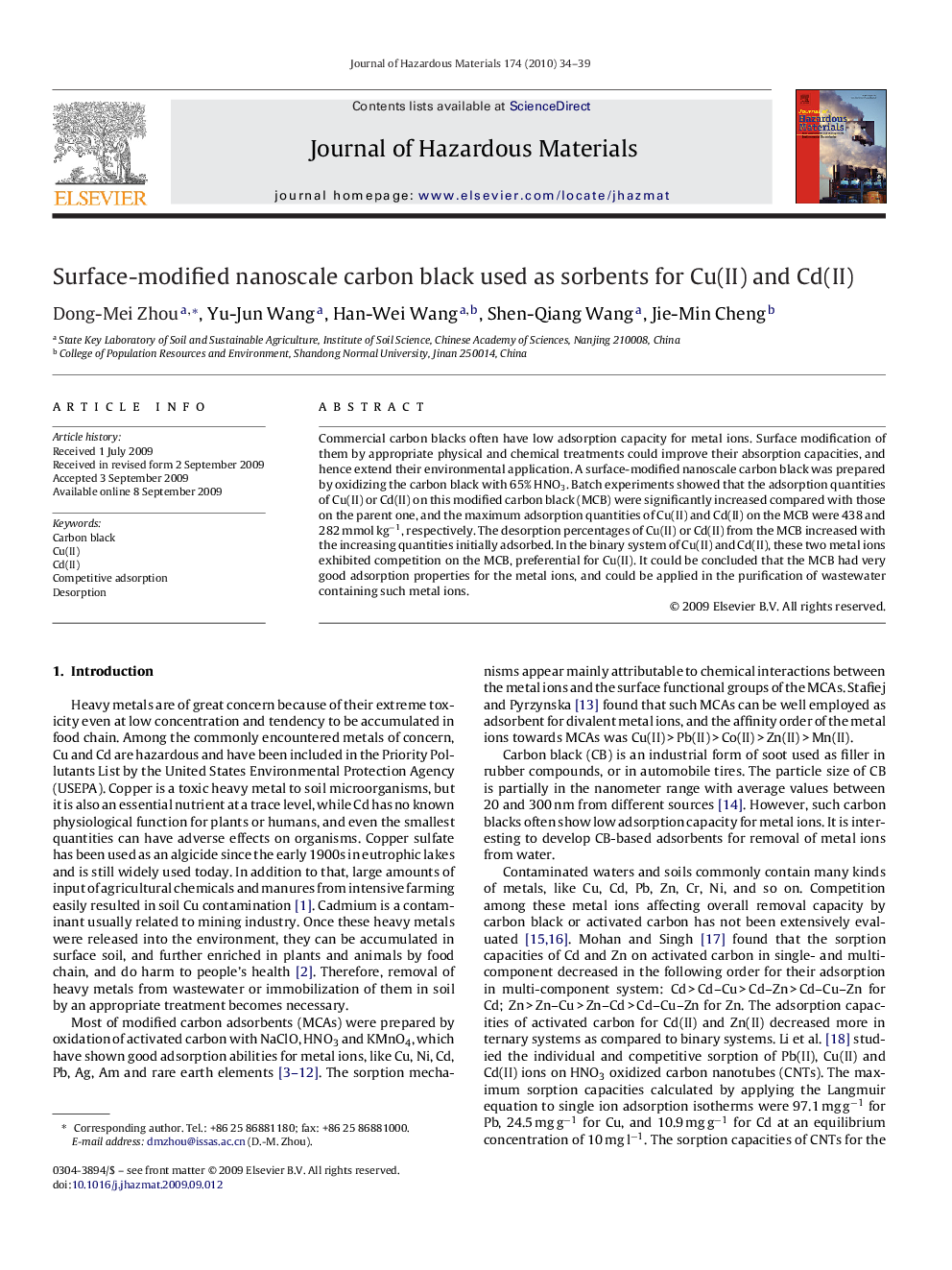| Article ID | Journal | Published Year | Pages | File Type |
|---|---|---|---|---|
| 580632 | Journal of Hazardous Materials | 2010 | 6 Pages |
Abstract
Commercial carbon blacks often have low adsorption capacity for metal ions. Surface modification of them by appropriate physical and chemical treatments could improve their absorption capacities, and hence extend their environmental application. A surface-modified nanoscale carbon black was prepared by oxidizing the carbon black with 65% HNO3. Batch experiments showed that the adsorption quantities of Cu(II) or Cd(II) on this modified carbon black (MCB) were significantly increased compared with those on the parent one, and the maximum adsorption quantities of Cu(II) and Cd(II) on the MCB were 438 and 282 mmol kgâ1, respectively. The desorption percentages of Cu(II) or Cd(II) from the MCB increased with the increasing quantities initially adsorbed. In the binary system of Cu(II) and Cd(II), these two metal ions exhibited competition on the MCB, preferential for Cu(II). It could be concluded that the MCB had very good adsorption properties for the metal ions, and could be applied in the purification of wastewater containing such metal ions.
Related Topics
Physical Sciences and Engineering
Chemical Engineering
Chemical Health and Safety
Authors
Dong-Mei Zhou, Yu-Jun Wang, Han-Wei Wang, Shen-Qiang Wang, Jie-Min Cheng,
